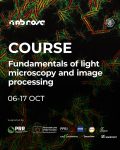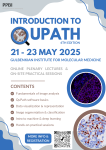
Advanced Training
- Fundamentals of light microscopy & image processing – October 6-17, 2025
 We are pleased to announce the course “Fundamentals of light microscopy & image processing”, taking place from October 6 to 17, 2025, at ITQB NOVA. This course will focus on the application of fluorescence microscopy in molecular and cellular microbiology and infection biology. The course will pass on basic concepts and practical training in conventional epifluorescence and confocal microscopy, super-resolution and electron microscopy.… Read more: Fundamentals of light microscopy & image processing – October 6-17, 2025
We are pleased to announce the course “Fundamentals of light microscopy & image processing”, taking place from October 6 to 17, 2025, at ITQB NOVA. This course will focus on the application of fluorescence microscopy in molecular and cellular microbiology and infection biology. The course will pass on basic concepts and practical training in conventional epifluorescence and confocal microscopy, super-resolution and electron microscopy.… Read more: Fundamentals of light microscopy & image processing – October 6-17, 2025 - Introduction to QuPath Course – May 21–23 – 2025 – 4th Edition
 We are pleased to announce the 4th edition of the course “Introduction to QuPath”, taking place from May 21 to 23, 2025. This nationwide course is organized by the Bioimaging Platform at GIMM in collaboration with the Portuguese Platform of BioImaging (PPBI). The course will be held in person at GIMM – Oeiras (Protagoras Room), and locally at several PPBI Nodes across Portugal,… Read more: Introduction to QuPath Course – May 21–23 – 2025 – 4th Edition
We are pleased to announce the 4th edition of the course “Introduction to QuPath”, taking place from May 21 to 23, 2025. This nationwide course is organized by the Bioimaging Platform at GIMM in collaboration with the Portuguese Platform of BioImaging (PPBI). The course will be held in person at GIMM – Oeiras (Protagoras Room), and locally at several PPBI Nodes across Portugal,… Read more: Introduction to QuPath Course – May 21–23 – 2025 – 4th Edition - 4th Edition | Advanced Course on Fluorescence Microscopy & Image Analysis
 RISE-Health, UBI, Covilhã | 7 March – 11 April, 2025 This course aims to provide the basic concepts of acquiring and analyzing fluorescence microscopy images in biomedical research, as well as a basic understanding of the theory and algorithms used in these processes, preparing the participants to use these tools in their research projects. The theoretical sessions will provide the theoretical basis for… Read more: 4th Edition | Advanced Course on Fluorescence Microscopy & Image Analysis
RISE-Health, UBI, Covilhã | 7 March – 11 April, 2025 This course aims to provide the basic concepts of acquiring and analyzing fluorescence microscopy images in biomedical research, as well as a basic understanding of the theory and algorithms used in these processes, preparing the participants to use these tools in their research projects. The theoretical sessions will provide the theoretical basis for… Read more: 4th Edition | Advanced Course on Fluorescence Microscopy & Image Analysis - 15th Edition | Course on Optical Microscopy Imaging for Biosciences
 i3S – Porto | 31 March – 04 April, 2025 This comprehensive microscopy course delves into cutting-edge imaging technologies, including Fluorescence Lifetime Imaging Microscopy (FLIM) and Super-Resolution Microscopy. Tailored for scientists and microscopy enthusiasts, it provides a deep understanding of these advanced techniques, guiding participants through the entire workflow—from experimental planning to quantitative image analysis. The program combines theoretical lectures from renowned experts… Read more: 15th Edition | Course on Optical Microscopy Imaging for Biosciences
i3S – Porto | 31 March – 04 April, 2025 This comprehensive microscopy course delves into cutting-edge imaging technologies, including Fluorescence Lifetime Imaging Microscopy (FLIM) and Super-Resolution Microscopy. Tailored for scientists and microscopy enthusiasts, it provides a deep understanding of these advanced techniques, guiding participants through the entire workflow—from experimental planning to quantitative image analysis. The program combines theoretical lectures from renowned experts… Read more: 15th Edition | Course on Optical Microscopy Imaging for Biosciences - Intro to BioImage Analysis with Python for Life Scientists -A distributed in-person training course
 7th – 9th October 2024 | Sweden – France – Portugal The course Intro to BioImage Analysis with Python for Life Scientists – A Distributed In-Person Training Course offers a fantastic opportunity for those interested in using Python for image analysis and learning how Jupyter notebooks can streamline their workflows. Scheduled for October 7th-9th, 2024, this beginners’ course will take place in various… Read more: Intro to BioImage Analysis with Python for Life Scientists -A distributed in-person training course
7th – 9th October 2024 | Sweden – France – Portugal The course Intro to BioImage Analysis with Python for Life Scientists – A Distributed In-Person Training Course offers a fantastic opportunity for those interested in using Python for image analysis and learning how Jupyter notebooks can streamline their workflows. Scheduled for October 7th-9th, 2024, this beginners’ course will take place in various… Read more: Intro to BioImage Analysis with Python for Life Scientists -A distributed in-person training course
